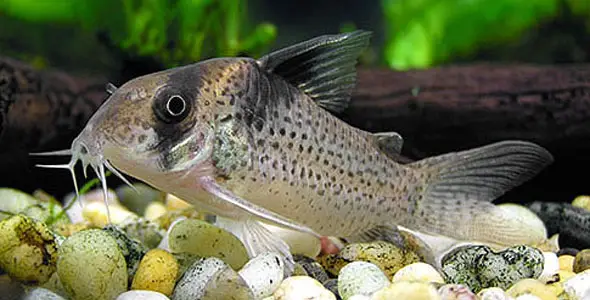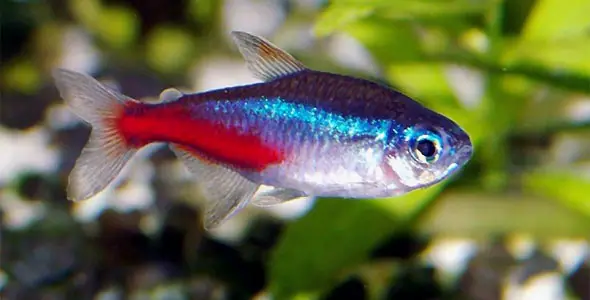Corydoras Catfish, also known as Cories or Cory Cats, are an excellent addition to any freshwater aquarium. They get along with all other fish and provide a unique shape and appearance to the waters. The Cory Cat resembles a small sturgeon with a humped back, armored scales, and the distinctive whiskers seen on all catfish. They are an enjoyable addition to any tank with rather unique behaviors. While most of their time is spent on the bottom of the tank inspecting the floor, it’s not uncommon for Cories to suddenly dart to the top of the tank and stick their mouth out for a “breath” of fresh air. Cories are very hardy and able to handle a number of changes in the tank. They are a peaceful fish that does well with a variety of other fish. The Corydoras Catfish is exceptionally long-lived, with some surviving in captivity for 27 years.
Sub-Species for Aquariums:
Dwarf – Small and silver, what sets the Dwarf Corydoras apart is the unique black and white emblem on the base of the tail.
Leopard – The Leopard Corydoras is a small silver bodied fish covered in small spots that resemble those of a leopard’s coat.
Peppered – Ironically, while the Leopard Corydoras is peppered in tiny black spots, it is the Peppered Corydoras that has large black spots on its silver body.
Albino- One of the most sought after Corydoras, the Albino Corydoras Catfish is solid white with pink eyes. It makes a stunning choice for any tank.
Skunk – The Skunk Corydoras is a silvery-pink fish with a thick black line running horizontally across its back from the eye to the base of the tail on each side of the body.
Care:
Caring for the Corydoras Catfish is fairly simple as they are a very hardy species that is incredibly long-lived. They prefer cooler temperatures as they are bottom dwellers, but will happily exist in temperatures around 75˚F with neutral pH.
Diet:
The most difficult aspect of caring for a Cory Cat is the diet. Because they are bottom dwelling, they prefer to eat their food from the bottom of the tank, meaning whatever food is fed must be able to sink to the bottom of the tank. While they will happily supplement their diet with what they can scavenge, scavenging does not provide enough nutrition. Consider feeding your top dwelling fish flake food and your catfish specially designed pellets that will sink to the bottom.
Size: 1-5 Inches
Freshwater/ Saltwater: Freshwater
Diet: Omnivore
Reef Compatibility: NA
Tank Mate Compatibility: 8
Lifespan: Up to 25 Years





